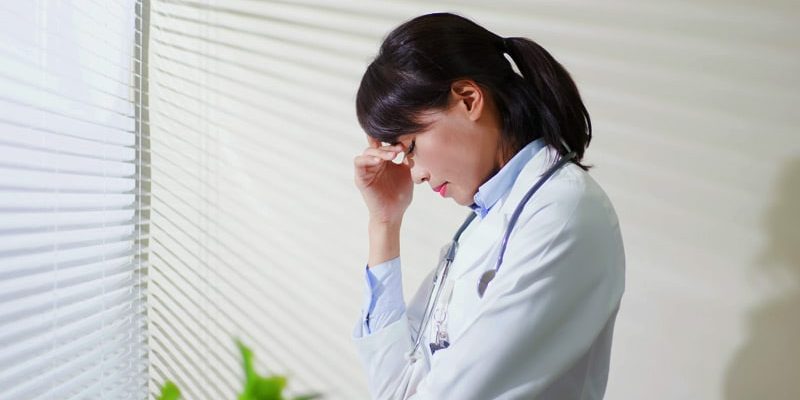The lingering effects of the COVID-19 pandemic continue to take a toll on the happiness, wellness, and lifestyles of many segments of the population, but especially those in the healthcare field, including cardiologists.
The newly released Medscape Cardiologist Lifestyle, Happiness & Burnout Report 2022 explores cardiologists’ happiness in their personal and professional lives and how they are maintaining mental and physical health.
Prior to the global pandemic, more than three quarters (79%) of cardiologists said they were “very” or “somewhat” happy outside of work, similar to physicians overall (81%).
But as the pandemic has worn on, feelings have shifted, and there are clear signs of stress and strain on those in the healthcare field.
Now, the percentage of cardiologists who say they are currently “very” or “somewhat” happy outside of work has fallen to 59%, the same as among physicians overall.
Female Cardiologists Hit Hard
In last year’s report, 42% of cardiologists reported burnout overall; that’s risen to 47% this year.
When it comes to burnout, cardiologists remain in the middle range of burned-out physicians. Perhaps not surprising given the challenges of the COVID-19 pandemic, burnout rates are highest among emergency medicine and critical care specialists.
Nearly 4 in 10 cardiologists report being more burned out now than during the initial quarantine months of the pandemic; about half said their burnout was the same. Among physicians overall, 55% said they were more burned out now.
Female cardiologists reported being burned out at a greater rate than their male colleagues.
“There’s no question that women have reported far more role strain during the pandemic than men,” said Carol A. Bernstein, MD, psychiatrist at Montefiore Health System and professor and vice chair for faculty development and well-being at Albert Einstein College of Medicine.
“Often women assumed more of the childcare and home-schooling responsibilities in their households. As result, we know that more women dropped out of the workforce. Also, past studies indicate that women are more likely to report feelings of burnout than men,” Bernstein noted.
The volume of bureaucratic tasks is the main driver of cardiologist burnout, similar to that for physicians overall (60%). Other major factors are lack of respect from colleagues, lack of control or autonomy, more time devoted to electronic health records, and spending too many hours at work.
Cardiologists’ top ways to quell burnout are cutting back on work hours and doing meditation or other stress-relieving strategies ― similar to physicians overall.
About one third (34%) of cardiologists feel that their personality type contributes to their burnout, the same as physicians overall. Nearly two thirds (62%) of cardiologists say burnout affects their relationships, a somewhat smaller percentage than among physicians overall (68%).
Work-Life Balance
The vast majority of cardiologists are currently in a committed relationship, with 89% either married or living with a partner. A somewhat lower percentage (83%) of physicians overall report being in a committed relationship.
About 8 in 10 cardiologists describe their marriage as good or very good ― similar to the proportion in last year’s report (86%).
About half of cardiologists are married to or are partnered with someone who does not work in medicine. This is similar to the proportion among all physicians (56%).
Among cardiologists balancing parenthood and a medical career, female physicians noted feeling conflicted more often than their male peers (49% vs 34% were “very conflicted” or “conflicted”).
This general attitude is reflected in almost all occupations, according to a Pew Research survey, which found that larger shares of mothers than fathers struggled with childcare responsibilities during the pandemic.
More than half of cardiologists said they are willing to take a cut in pay in order to achieve a better work-life balance or have more free time. This is similar among physicians overall (55%).
Only about 7% of cardiologists reported clinical depression (severe depression lasting some time and not caused by grief), while 83% reported colloquial depression (feeling down, blue, sad).
About 6 in 10 depressed cardiologists (61%) said their depression does not have an impact on relationships with patients.
Among those who saw an impact, the major behaviors they reported included being easily exasperated with patients and feeling less motivated to take patient notes carefully.
To maintain happiness and mental health, cardiologists choose to spend their time with the ones they love, exercise, and do the things they enjoy.
Perhaps not surprisingly, more cardiologists were happy with their work-life balance before the pandemic than now (69% vs 50%). The same holds for physicians overall.
Before the pandemic, 18% of cardiologists reported being unhappy with their work-life balance. That’s risen to 35% this year.
Findings from Medscape’s latest happiness, wellness, and lifestyle survey are based on 13,069 Medscape member physicians (61% male) practicing in the United States who completed an online survey conducted between June 29 and September 26, 2021. Most respondents were between 35 and 64 years old.
For more news, follow Medscape on Facebook, Twitter, Instagram, and YouTube.
Source: Read Full Article
